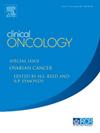回顾性肿瘤学出版物中的生存数据质量
IF 3
3区 医学
Q2 ONCOLOGY
引用次数: 0
摘要
生存终点是癌症研究的基石。它们的准确性取决于数据源的质量,而许多生存数据来源,如电子医疗记录(emr),提供的数据不完整。目前尚不清楚肿瘤学期刊上的回顾性研究报告其生存数据来源或使用高质量来源的频率。材料和方法纳入2001年、2011年和2021年在9种肿瘤学期刊上发表的以生存期为终点的回顾性研究。对于每篇论文,提取了终点和结果数据源。数据来源分为高质量、不确定质量和未知。主要结局是使用高质量生存数据源的研究比例。在纳入的514篇论文中,最常报道的终点是总生存期(OS, 80%),其次是无进展生存期(PFS)和无病生存期;14%未报告生存数据来源。所有期刊更多地使用不确定质量而不是高质量的数据源,但2021年发表的论文比2001/2011年发表的论文使用了更多的高质量来源(26%对13%)。在多变量回归中,放射肿瘤学论文较少使用高质量的数据源(p <;0.001),但数据质量与影响因子无关联。结论:大多数研究使用了质量不确定的来源,高影响因子期刊发表的高质量数据源研究的比例并不高,尽管随着时间的推移,这种情况有所改善。这表明有必要改进对报告指南的遵守,并鼓励研究人员使用高质量的生存数据来源。本文章由计算机程序翻译,如有差异,请以英文原文为准。
Survival Data Quality in Retrospective Oncology Publications
Aims
Survival endpoints are the cornerstone of cancer research. Their accuracy depends on the quality of the data sources, and many sources of survival data, such as electronic medical records (EMRs), provide incomplete data. It is unknown how often retrospective studies in oncology journals report their survival data sources or use high-quality sources.
Materials and Methods
Retrospective studies that included survival as an endpoint and were published in nine oncology journals in 2001, 2011, and 2021 were included. For each paper, endpoint(s) and outcome data source(s) were extracted. Data sources were categorised as high quality, uncertain quality, or unknown. The primary outcome was the proportion of studies utilising a high-quality survival data source.
Results
Of 514 included papers, the most commonly reported endpoint was overall survival (OS, 80%), followed by progression-free survival (PFS) and disease-free survival; 14% did not report survival data source. All journals more often used uncertain-quality than high-quality data sources, but papers published in 2021 used more high-quality sources than those in 2001/2011 (26% vs 13%). In multivariable regression, radiation oncology papers were less likely to use high-quality data sources (p < 0.001), but there was no association of data quality with impact factor.
Conclusion
Most studies used sources of uncertain quality, and higher impact-factor journals did not publish a higher proportion of studies with high-quality data sources, though there was improvement over time. This suggests a need to improve compliance with reporting guidelines and encourage researchers to use high-quality survival data sources.
求助全文
通过发布文献求助,成功后即可免费获取论文全文。
去求助
来源期刊

Clinical oncology
医学-肿瘤学
CiteScore
5.20
自引率
8.80%
发文量
332
审稿时长
40 days
期刊介绍:
Clinical Oncology is an International cancer journal covering all aspects of the clinical management of cancer patients, reflecting a multidisciplinary approach to therapy. Papers, editorials and reviews are published on all types of malignant disease embracing, pathology, diagnosis and treatment, including radiotherapy, chemotherapy, surgery, combined modality treatment and palliative care. Research and review papers covering epidemiology, radiobiology, radiation physics, tumour biology, and immunology are also published, together with letters to the editor, case reports and book reviews.
 求助内容:
求助内容: 应助结果提醒方式:
应助结果提醒方式:


